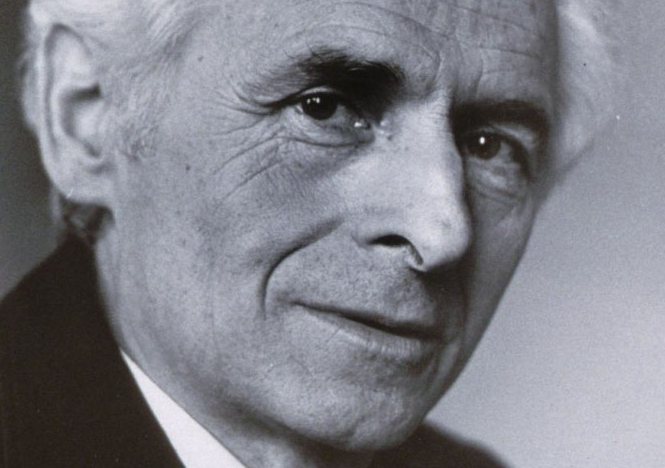
Claude Vigée (1921 – present)
“Miracles sometimes happen, and luck sometimes works amazingly.”
Born on January 3rd, 1921, Claude Vigée grew up in Bishwiller, a small town on the French-German border that had traded hands several times over the fifty years prior to his birth. As both a Jew and an Alsatian, Claude’s life offers a unique combination of minority perspectives. His experience also represents a rare account of working directly in front of (and often with) officials in Vichy France to save refugees.
What follows is the story of an Alsatian-Jewish medical student who used his special legal status and medical credentials to help others escape danger.
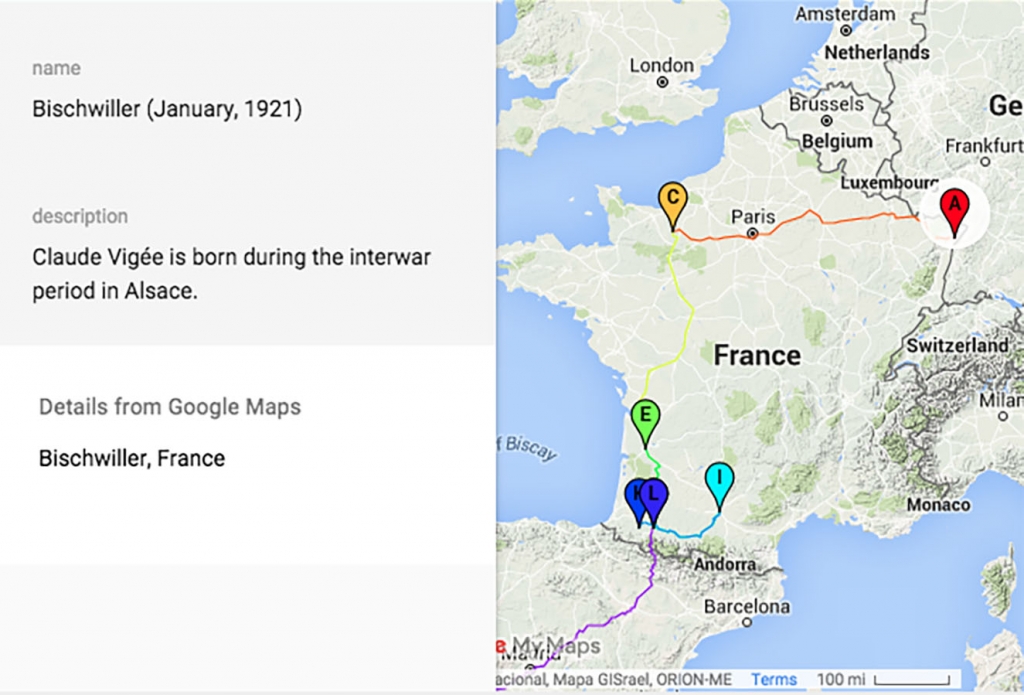
Normandy – September, 1939
At the end of a family vacation in Normandy, the Vigées’ return to Alsace was cut off by preparations for the coming German invasion. Riding the wave of evacuations, the Vigées were pushed south with only the belongings they had brought on their trip. Claude, eighteen years old at the time, remembers the “tremendous disorder” of the evacuations. With France preparing to defend against a major invasion just miles from their hometown, the Vigées resettled in Bordeaux, where Claude enrolled in medical school.
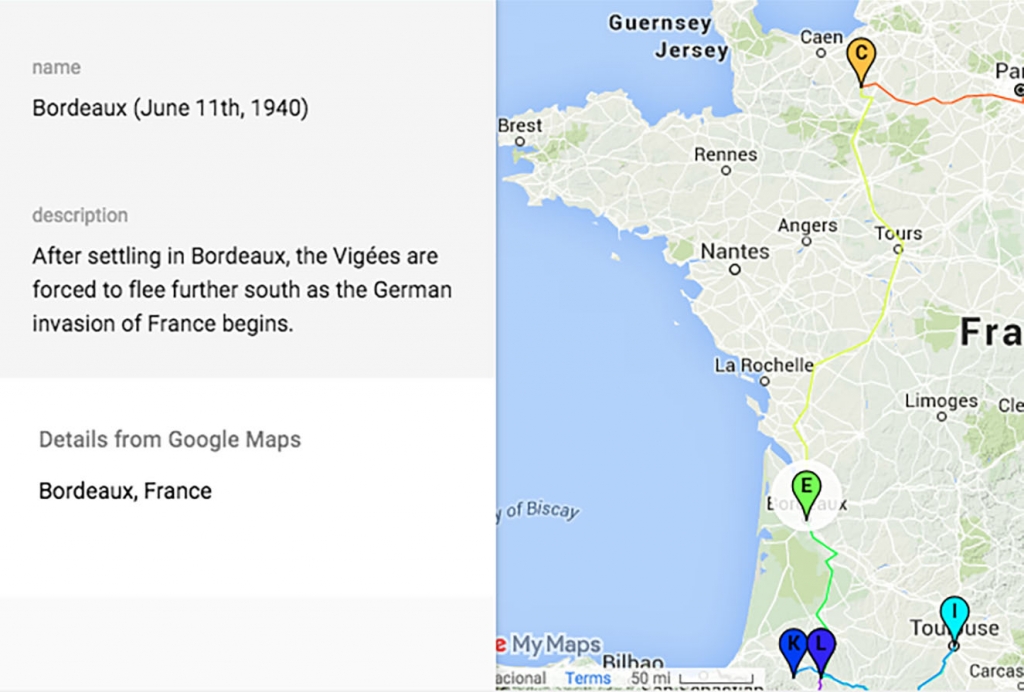
Rush to the Border – June 11th, 1940
That morning the news arrived: the German invasion had begun. Understanding it was “particularly imperative as a Jew to get out before they
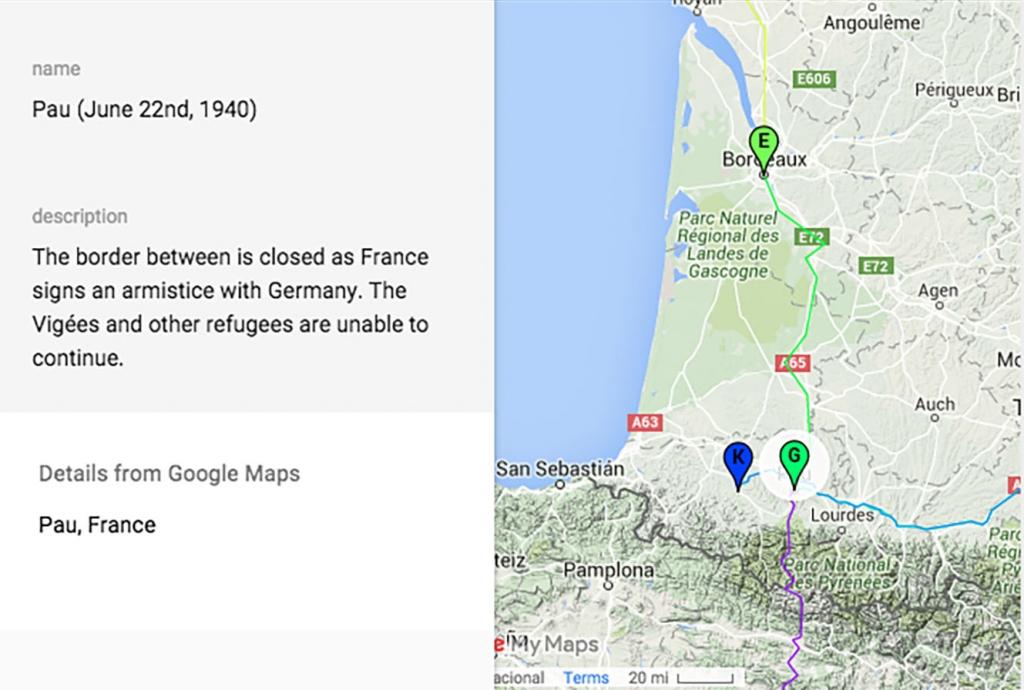
End of the Road – June 22nd, 1940
At the culmination of two weeks of military defeats, Philippe Petain, the Premier of 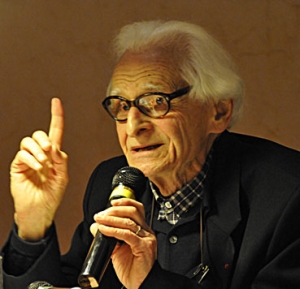 France, signed an armistice with Germany. Nineteen years old at the time, Claude remembers receiving the news of the capitulation, describing it as “the end of the world for us” and a “tremendous catastrophe,” accompanied by an overwhelming sense of ruin. He recalls the “feeling of personal threat became immediate,” especially as he was sure “our fate as Jews was worse than that of other French citizens.” Unable to leave the country, Claude and his family were among 150,000 refugees stranded in Pau, most of whom were sleeping in the streets.
France, signed an armistice with Germany. Nineteen years old at the time, Claude remembers receiving the news of the capitulation, describing it as “the end of the world for us” and a “tremendous catastrophe,” accompanied by an overwhelming sense of ruin. He recalls the “feeling of personal threat became immediate,” especially as he was sure “our fate as Jews was worse than that of other French citizens.” Unable to leave the country, Claude and his family were among 150,000 refugees stranded in Pau, most of whom were sleeping in the streets.

Making a New Home – July, 1940
The establishment of the Vichy regime in Southern France ended all official evacuation attempts. As a result, many of the refugees who had fled to the south found themselves unable to return to their homes in the Nazi-occupied north. With Alsace-Lorraine once again annexed into German territory, the Vigée family settled in Toulouse, where Claude continued his medical studies. Vichy anti-Semitic laws prohibited Jews from continuing their university studies unless they were able to prove five generations of French citizenship, roughly to before the French Revolution. The Vigées were among only 3% of France’s Jews who could do so. Despite this special status, Claude maintained “no illusions as to what it all meant,” and knew “there was little difference in being a French Jew instead of any other Jew.”
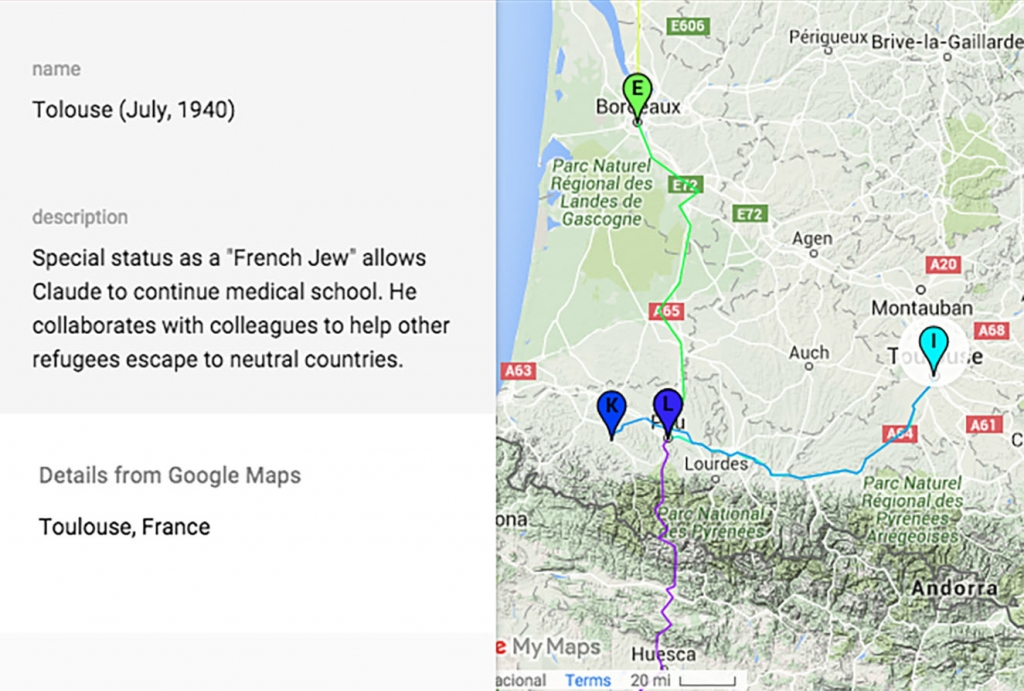
Accion Juif – Early 1941
Having no desire to “hide and wait until it was over or pretend it wasn’t anything to worry about,” Claude began to collaborate with colleagues he had met in school and among his fellow refugees. Together, they established the Accion Juif, group of “defense and action, as far as we could.” Aiming to to help smuggle refugees to Spain and Switzerland, Claude helped to secure refugees false papers. “We could do very little,” he remembers, “our means were very small and the obstacles tremendous.”
Enabled by his unique French citizenship, Claude was able to enter internment camps under auspices of medical service, smuggling things in and people out by providing fake autopsy and death certificates. Though it was often difficult to identify Jews, thanks to destruction of documents and false identities, Claude and his colleagues were able to save over three dozen refugees.
Out of Peril – Late 1942
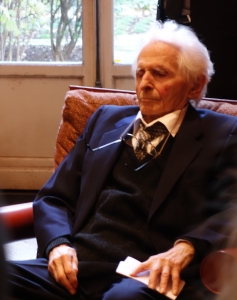 Following the launch of Operation Torch, the Allied invasion of North Africa, the Vichy territory was placed under direct German occupation. In addition to escalating pressure on the refugees he helped, this meant Claude’s unique status as a French Jew evaporated, removing his ability to serve the Accion Juif. As the situation grew more dire, Claude decided it was time to leave and used his contacts to do a “little doctoring” of his passport.
Following the launch of Operation Torch, the Allied invasion of North Africa, the Vichy territory was placed under direct German occupation. In addition to escalating pressure on the refugees he helped, this meant Claude’s unique status as a French Jew evaporated, removing his ability to serve the Accion Juif. As the situation grew more dire, Claude decided it was time to leave and used his contacts to do a “little doctoring” of his passport.
He escaped through Spain, “which was very difficult and very lucky.” He managed to avoid being hampered by the Spanish authorities, which he remembered as as miraculous. “Miracles sometimes happen, and luck sometimes works amazingly.” Claude was among the last trainload of refugees to escape from Vichy before the Nazis and the Gestapo took over the Spanish border. Through Portugal, Claude fled to the United States, where he became a professor, later going on to live in Israel where he taught at the Hebrew University of Jerusalem.
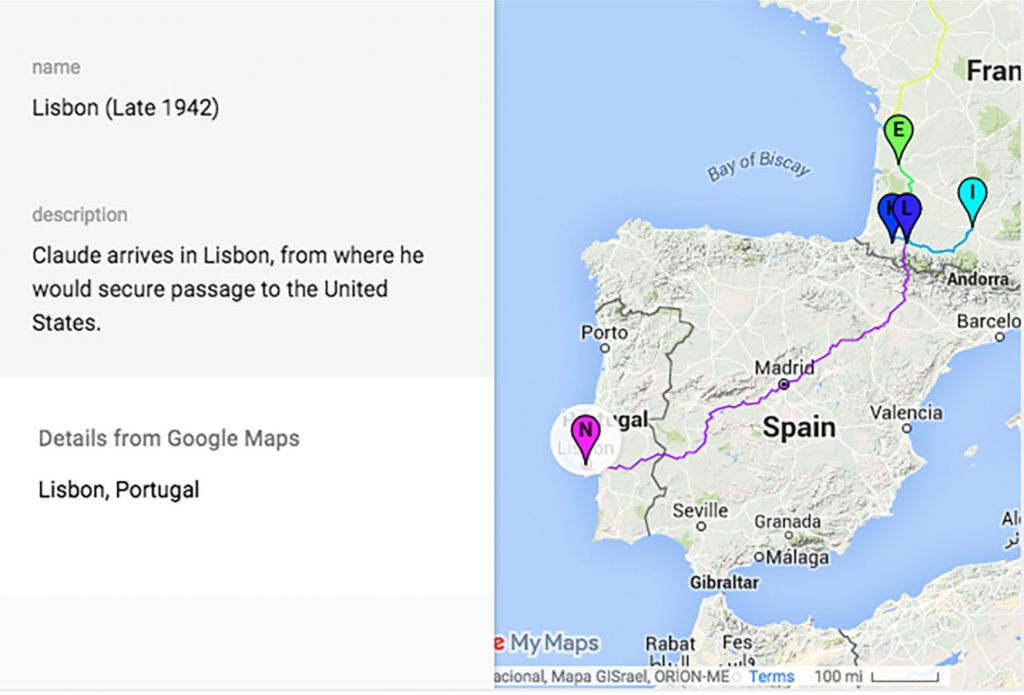
![]() Explore Claude’s complete journey with the interactive Google map. Get started by clicking the Layers panel (pictured left) to see the stages of Claude’s journey:
Explore Claude’s complete journey with the interactive Google map. Get started by clicking the Layers panel (pictured left) to see the stages of Claude’s journey:







1. See the book, “Ordinary Heroes”, about Hannah Senesh and her family, by Peter Hay. Hannah’s brother, Gyuri, was studying in Lyon when the war broke out. Later he too managed to flee with others over the Pyrenees. After being detained by the Spanish in Girona, he was later able to make his way to Palestine.
2. Walter Benjamin, writer and philosopher, was not in good health when he also attempted to flee Paris and France via the Spanish border. In Portbou on the Spanish side of the border in the area where he died, there is a memorial monument to this later renowned refugee.